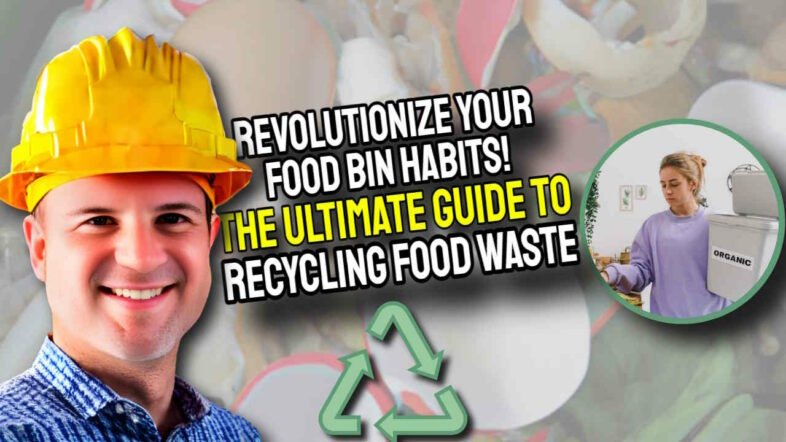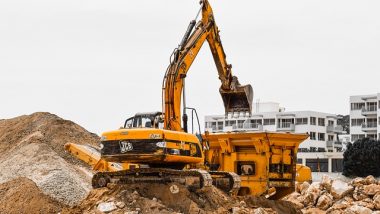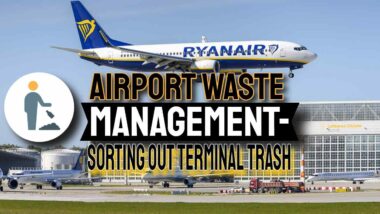Recycling food waste is important when you consider that about a third of all food bought ends up in the bin. So, what could be better than setting out to revolutionize your food wastage with better binning habits! Develop your own green credentials with this article; “The Ultimate Guide to Recycling Food Waste!”
Recycling food waste has become an essential part of modern-day sustainability efforts. Food waste is a significant issue worldwide, with an estimated one-third of food produced for human consumption being wasted every year. Recycling food waste helps to reduce the amount of waste that ends up in landfills, which in turn reduces greenhouse gas emissions, and helps conserve natural resources.
Table of Contents
- Introduction
- Getting started with recycling food
- Composting, anaerobic digestion, and food recovery programs
- What can I put in my food caddy?
- What can be recycled?
- What can’t be recycled?
- Food planning tips to reduce waste and save money
- What can I put in my bins and recycling containers?
- I produce lots of rubbish, can I have a bigger bin?
- Can I have a smaller bin?
- Do I have to remove the plastic window when recycling envelopes?
- Can I put Tetra Paks in my blue bag?
- Why do I have to keep the paper and cardboard separate from the mixed recycling in the boxes when throwing it all in the same truck?
- What happens if I have more paper and card than will fit into the blue bag?
- What happens if my recycling containers are broken?
- Can I place my additional cardboard/paper out in carrier bags
- Where can I order caddy liners from?
- Can I use ordinary plastic bags to line my caddy?
- I already compost at home, should I still use my composter?
- Why are bin men taking photos of my bin/ street?
- Can I put animal bedding and cat litter in my garden waste bin?
- Conclusion
Introduction
Getting started with recycling food
Recycling food is an essential step towards achieving a sustainable future. It is a process that involves converting food waste into reusable materials or energy sources. Getting started with recycling food does not require much effort.
The first step is to understand what can be recycled. Most food waste falls into two categories: organic and inorganic waste. Organic waste includes food scraps, fruit and vegetable peelings, and leftover food, while inorganic waste comprises plastic, glass, and metal packaging. Once you have separated your food waste into these two groups, you can start recycling. The most common method of recycling food is composting.
This process involves mixing organic waste with soil, where it decomposes into a rich fertilizer that can be used to nourish plants. Another approach is anaerobic digestion, which involves breaking down organic material in the absence of oxygen to produce biogas, a renewable energy source. To maximize the benefits of recycling food, it is crucial to involve all members of the community.
Schools, homes, and businesses can participate in recycling programs to reduce the amount of food waste generated. With the right infrastructure and support, recycling food can contribute significantly to reducing greenhouse gas emissions, conserving natural resources, and promoting a healthier ecosystem.
Getting started with recycling food requires a simple commitment to separating organic and inorganic waste and using methods such as composting and anaerobic digestion.
Recycling food is a small but powerful step towards a sustainable future that can be achieved through collective effort.
Composting, anaerobic digestion, and food recovery programs
Recycling food waste can be achieved through various methods, such as composting, anaerobic digestion, and food recovery programs:
- Composting involves breaking down food waste into nutrient-rich soil that can be used to improve soil health and promote plant growth.
- Anaerobic digestion is a process that breaks down food waste in the absence of oxygen to produce biogas, which can be used to generate electricity and heat.
- Food recovery programs involve collecting food that is still edible but would otherwise go to waste and distributing it to those in need.
Recycling food waste is not only beneficial for the environment but also has economic benefits such as reducing disposal costs.
It is considered essential to continue promoting and encouraging the recycling of food waste as a key strategy in building a sustainable and environmentally conscious society. Unless nations like the UK recycle their food waste they will not achieve their Net-Zero 2050 goals.
What can I put in my food caddy?
A food caddy is an essential kitchen item that can help keep your kitchen clean, healthy, and eco-friendly. When it comes to filling up your food caddy, you might be wondering what you can and can't put in it. In general, food caddies are designed to hold food scraps and leftovers that are either compostable or easily biodegradable.
This includes fruit and vegetable scraps, eggshells, tea bags, coffee grounds, and even small amounts of dairy and meat products. However, it's important to avoid putting plastics, metals, glass, or any non-organic material in the caddy.
When filling up your food caddy for home composting, it's important to remember that the type of waste you put in there will determine the quality of the compost that you produce. Additionally, for home composters, it's important to avoid putting any pet waste, oily or greasy foods, or large quantities of meat, as these can attract pests and create unpleasant odours. None of this matters though if your caddy will be collected by your council.
By properly filling up your food caddy, you can reduce your carbon footprint, limit the amount of waste polluting our planet, and help create nutrient-rich compost that can be used to nourish plants and gardens.
So, next time you're wondering what you can put in your food caddy, remember to stick to organic waste and avoid any non-biodegradable items.
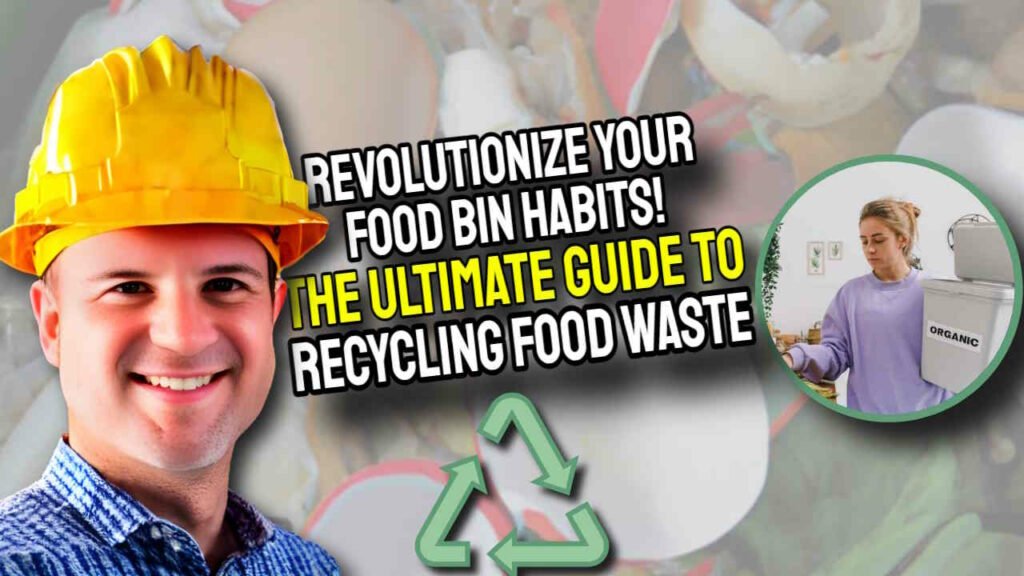
What can be recycled?
Recycling has become an integral part of our daily lives as we continue to strive towards a sustainable future. Understanding what can be recycled is important to ensure that we are doing our part to reduce waste and protect our environment.
The good news is, there are many materials that can be recycled, from paper and cardboard to glass, plastics, and metals.
Paper and cardboard can easily be recycled by placing them in the designated recycling bin, with many recycling facilities accepting mixed paper and cardboard materials. Glass is also highly recyclable and can be recycled repeatedly without losing its quality. Plastics are a bit more complex, with different types requiring different recycling processes.
However, most plastic containers can be recycled, including water bottles, food containers, and plastic bags. Lastly, metals such as aluminium, steel, and copper are also highly recyclable and can be repurposed into new products.
It is important to note that not all materials can be recycled, such as contaminated materials or certain types of plastic. Therefore, it is essential to educate ourselves on what can and cannot be recycled to ensure that we are doing our part in creating a cleaner and more sustainable future.
What can’t be recycled?
While recycling has become a popular practice among environmentally conscious individuals and businesses, not everything can be recycled. Certain materials cannot be processed into new products due to their composition or the cost and energy required to recycle them.
Among the items that cannot be recycled are plastic bags and wraps, as they can clog recycling machinery, and dirty or greasy pizza boxes, which can contaminate other recyclables. Styrofoam, or expanded polystyrene, is also difficult to recycle as it is lightweight and bulky, making it costly to collect and transport.
Other items that cannot be recycled include electronic devices such as batteries and light bulbs, which contain hazardous materials that can pose a threat to human health and the environment.
Similarly, items that are coated in chemicals or contain toxic substances, such as aerosol cans, paint cans, and some cleaning products, cannot be recycled. It is important to educate ourselves on what can and cannot be recycled, as improperly disposed of waste can lead to environmental pollution and harm to wildlife.
But the waste treatment technology used is being improved by the recycling equipment manufacturers. Old “particle size reduction based” separation equipment was unable to clean the plastics found in source-separated food waste well enough for the rejected miscellaneous materials to be a useful output and sold as, for example, a fertiliser.
Until innovative depackagers like the Drycake Twister entered the market there was no choice but to send the rejected material stream to landfill or incineration as waste.
But now, the type of depackaging equipment is able to recycle much more of the plastic that is found in food waste from all sources.
By reducing our consumption of non-recyclable materials, we can work towards a more sustainable and eco-friendly future.
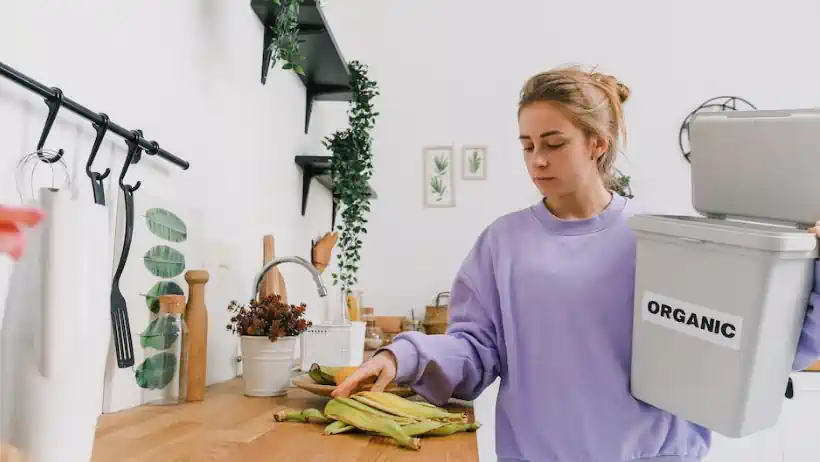
Food planning tips to reduce waste and save money
In today's world, where food waste has become a significant concern, it is crucial to plan your meals and reduce the amount of food you throw away.
This not only helps the environment but also saves money. One of the essential food planning tips to reduce waste is to make a list of what you need before going grocery shopping. This helps to avoid impulse purchases, which may contribute to food waste. Additionally, purchasing items in bulk, such as grains, beans, and pasta, can also save you money and reduce the amount of packaging waste. Furthermore, meal prepping is another great way to minimize waste and save money.
By cooking in bulk, you can portion out meals for the week and avoid throwing away leftovers. Another crucial aspect of food planning is understanding expiration dates. By organizing your fridge and pantry, you can ensure that food is used before it goes bad. Finally, composting is an easy way to reduce food waste and improve soil health.
By composting scraps and other organic waste, you can produce nutrient-rich fertilizer for your garden. In conclusion, implementing these food planning tips can help reduce waste, save money, and benefit the environment.
What can I put in my bins and recycling containers?
Knowing what you can and cannot put in your bins and recycling containers is important for maintaining a clean and sustainable environment. There are a variety of items that can be placed in your recycling bin, including cardboard, plastic bottles, metal cans, glass bottles and jars, and paper products such as newspapers and magazines.
It is important to note that some materials should not be placed in your recycling bin, such as plastic bags, food waste, and hazardous waste. These items can contaminate the recycling stream and harm the environment. In addition to recycling, it is also important to properly dispose of household waste. Items such as food waste, diapers, and other non-recyclable materials should be placed in your regular garbage bin.
To ensure you are properly disposing of your household waste, it is recommended to check with your local waste management company for guidelines and regulations specific to your area. By following these guidelines and properly disposing of your waste, you can contribute to a cleaner and more sustainable environment for present and future generations.
I produce lots of rubbish, can I have a bigger bin?
As we go about our daily lives, it's only natural that we generate waste. From food packaging to empty cans, our homes and workplaces can quickly become filled with rubbish. However, there will be times when we produce more waste than usual, leaving us wondering if our bins are big enough. The good news is that it's possible to request a larger bin to accommodate your needs.
When it comes to household waste, most local authorities offer a range of bin sizes to cater to the varying needs of households. If you find that your current bin is constantly overflowing or you're struggling to fit all your rubbish inside, you can request a larger bin from your council. This will involve filling in a form and providing evidence to support your request, such as photos of your overflowing bin.
It's worth noting that while bigger bins may help in the short term, it's important to consider ways to reduce waste in the long run. This could include recycling more, reducing unnecessary packaging, and composting food waste. By making small changes to our everyday habits, we can all play a part in reducing the amount of waste we produce and helping to protect our planet.
In conclusion, if you find that you're struggling with excess waste, don't hesitate to reach out to your local council to request a larger bin. While this may be a quick fix, it's important to also consider ways to reduce your waste in the long term.
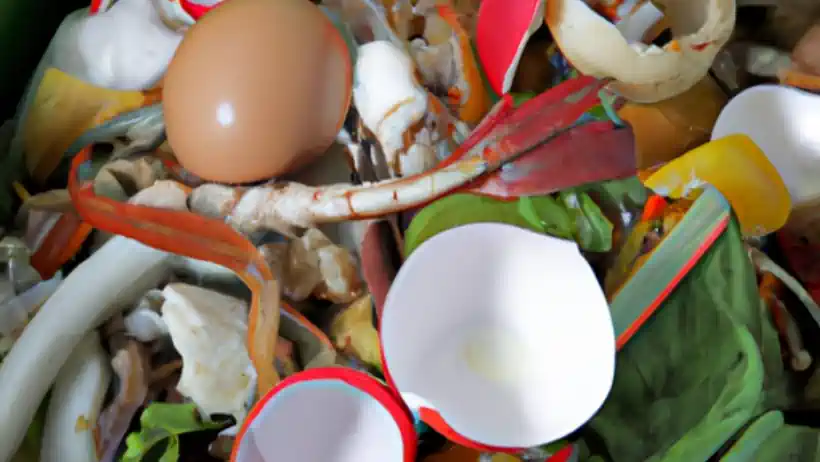
Can I have a smaller bin?
As people become more aware of the importance of reducing waste and minimizing their environmental impact, many are seeking ways to decrease the amount of waste they generate in their daily lives.
One simple step that individuals and families can take is to request a smaller bin for their household waste. By downsizing to a smaller bin, households can not only save money on waste collection fees but also reduce the amount of waste that ends up in landfills.
This is because a smaller bin encourages people to be more mindful of the waste they produce and to make conscious decisions about what they throw away. Instead of mindlessly tossing items into a large bin, people must consider whether an item can be recycled, composted, or reused.
This leads to a shift in behaviour that can have a positive impact on the environment. Furthermore, smaller bins can be a visual reminder of the need to minimize waste and live more sustainably. By taking this step, households can contribute to a healthier planet while also saving money and reducing clutter in their homes.
Do I have to remove the plastic window when recycling envelopes?
When it comes to recycling envelopes, many people may find themselves wondering whether or not they need to remove the plastic window before tossing the envelope in the recycling bin. The answer to this question ultimately depends on the recycling guidelines in your area.
In some areas, envelopes with plastic windows are accepted in recycling programs, while in other areas they are not. It is important to check the guidelines of your local recycling program to determine whether or not you can recycle envelopes with plastic windows.
If your local program accepts these types of envelopes, there is typically no need to remove the plastic window. However, if your local program does not accept these envelopes, it is important to remove the plastic window before placing the envelope in the recycling bin.
When it comes to recycling, it is crucial to follow proper guidelines to ensure the effectiveness of the program. If items are placed in the recycling bin that is not accepted, it can cause the entire batch to be contaminated and sent to the landfill.
Therefore, it is important to do your part in properly recycling items and following the guidelines set forth by your local program. With proper disposal practices, we can all do our part in reducing waste and preserving our environment for future generations.
Can I put Tetra Paks in my blue bag?
Tetra Paks, also known as drink cartons, have been a popular packaging material for over 40 years. They are a convenient and lightweight way to carry liquids, such as milk or juice, and they are also commonly used for food products such as soup and broths. However, many people are unsure if Tetra Paks can be recycled or if they should be placed in the blue bag.
The good news is that Tetra Paks are recyclable and can be placed in the blue bag! In order to recycle Tetra Paks, they must first be rinsed out and flattened. The next step is to place the Tetra Pak in the blue bag along with other recyclable items such as plastic bottles and aluminium cans.
Once collected, the Tetra Paks are transported to a recycling facility where they are processed and turned into new products such as paper towels, tissues, and even building materials. It is important to recycle Tetra Paks as they are made up of mainly paper, which is a valuable resource that can be reused.
By placing Tetra Paks in the blue bag, we are not only reducing the amount of waste in landfills but also helping to conserve natural resources. Therefore, do not hesitate to put Tetra Paks in the blue bag and become a part of the solution to protect our environment!
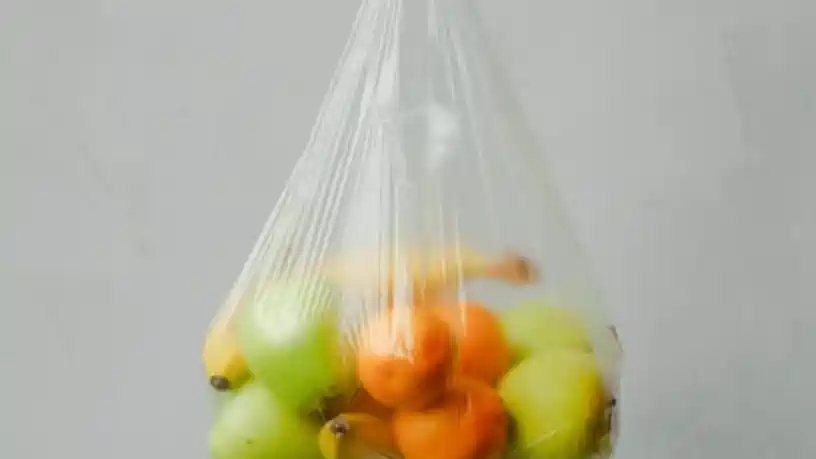
Why do I have to keep the paper and cardboard separate from the mixed recycling in the boxes when throwing it all in the same truck?
The separation of paper and cardboard from mixed recycling is a common practice in waste management, and for good reason. While it may seem more efficient to toss all recyclables into one container, the sorting process at a recycling facility is a nuanced and complex system that is optimized when specific materials are kept separate.
Paper and cardboard are some of the most commonly recycled materials and can be reused to make a variety of products, from new paper and packaging to insulation and even animal bedding. Tossing them in with mixed recycling, however, can contaminate the batch and render it unusable. This is because paper and cardboard can easily become soiled with food, grease or liquid, which can then contaminate other materials.
By separating paper and cardboard from mixed recycling, households and businesses help to ensure that the recyclable materials are of the highest possible quality, making them more desirable to recycling facilities and ultimately increasing the likelihood that they will be repurposed into new products.
Additionally, separating paper and cardboard allows for more efficient processing, as it is easier to sort and compress larger batches of homogeneous materials. In summary, keeping paper and cardboard separate from mixed recycling is a small but important step in creating a more sustainable future, and one that is well worth the effort in the long run.
What happens if I have more paper and card than will fit into the blue bag?
When it comes to recycling, every bit counts. However, there may be times when the amount of paper and card you have exceeds the capacity of the blue bag provided for your recycling. If you find yourself in this situation, there are a few things you can do to ensure your excess paper and card don't end up in a landfill.
Firstly, you could consider storing your excess recyclables until your next scheduled collection day. Alternatively, you may be able to use a second blue bag or a box/bundle to contain your excess paper and card. Check with your local council to see if this is an option in your area.
Another option is to take your excess paper and card to a local recycling centre. Most recycling centres accept paper and card, and some even offer curbside pick-up.
While it may require a little extra effort on your part to dispose of your excess paper and card, doing so will help divert waste from landfills and conserve valuable resources. Remember that every recycling effort contributes to a more sustainable future, so don't hesitate to explore your options when it comes to excess paper and card.
What happens if my recycling containers are broken?
If your recycling containers are broken, it is important to take action as soon as possible to ensure that your recycling efforts are not hindered. Broken containers can result in recyclable materials being lost or disposed of improperly, which can contribute to environmental degradation. Fortunately, most municipalities have programs in place to address broken recycling containers.
Some cities offer replacement containers for free, while others may charge a fee for replacement containers.
It is important to contact your local recycling program to find out what specific options are available to you. In the meantime, it is still important to continue recycling to the best of your ability.
Consider using alternative containers, such as cardboard boxes or reusable bags, to hold your recyclable materials until new containers can be obtained. Additionally, be sure to secure any broken or damaged containers to prevent spillage and keep the area clean and safe.
By taking these steps, you can ensure that your recycling efforts continue to make a positive impact on the environment.
Can I place my additional cardboard/paper out in carrier bags
As responsible citizens, it is crucial that we are aware of the proper disposal methods for our waste materials. One of the most common waste products we deal with daily are cardboard and paper. The question often arises, can additional cardboard and paper be placed out in carrier bags?
The answer to this question is not as simple as yes or no. Local councils often have different regulations when it comes to waste disposal. Some councils allow additional cardboard and paper to be placed in carrier bags, while others do not. It is essential to check with your local council on their specific regulations regarding waste disposal.
However, regardless of the council's regulations, it is always better to use dedicated cardboard or paper recycling bins provided by the council. This helps ensure that the materials are efficiently and correctly recycled, reducing the risk of environmental damage.
Moreover, it is worth noting that carrier bags are not recyclable unless delivered back to your supermarket into the special “plastic bags” bins at the entrance to your supermarket, and it is essential to avoid using them as much as possible.
In conclusion, it is best to check with your local council for specific regulations regarding waste disposal. However, it is always the best practice to use recycling bins provided by the council and avoid using carrier bags for additional cardboard or paper.
Where can I order caddy liners from?
When it comes to ensuring a clean and hygienic environment, using caddy liners is an absolute must. Whether it's for your home or workplace, these liners provide an effective barrier to prevent food waste, dirt and grime from accumulating in your waste bin. But, where can you order caddy liners from?
Luckily, there are many reputable and reliable suppliers out there that can provide you with an ample selection of caddy liners to suit your needs.
A quick online search can connect you with leading suppliers who offer durable and high-quality liners in various sizes and quantities. You can also check with your local grocery or home improvement store to see if they carry caddy liners.
In addition, companies that specialize in janitorial supplies or waste management services may have a range of liner options available for purchase. Before ordering, be sure to check the dimensions of your waste bin to ensure you order the right size liner.
Overall, ordering caddy liners is a simple process that can ensure a cleaner, more hygienic living or working environment. Take the time to research your options and find a supplier that meets your needs, so that you can maintain a cleaner, healthier environment with ease.
Can I use ordinary plastic bags to line my caddy?
When it comes to lining your caddy, it is important to consider the material that you will be using. While ordinary plastic bags may seem like a convenient option, it is important to note that they may not be the best choice for several reasons.
Firstly, ordinary plastic bags are not as durable as specially designed caddy liners, which are made from thicker and stronger materials that can withstand the weight of heavy or sharp objects. In addition, plastic bags may not fit perfectly into your caddy, which can lead to spills or leaks.
Moreover, plastic bags are not environmentally friendly, and their disposal can contribute to pollution. There are other options available that are better suited for caddy linings, such as compostable liners made from natural materials like cornstarch or paper.
These alternatives are theoretically more eco-friendly, and they are designed to fit your caddy perfectly, ensuring that there are no spills or leaks. Additionally, they are designed to be sturdy enough to handle heavy loads without tearing or breaking.
In conclusion, while it may seem tempting to use ordinary plastic bags to line your caddy, it is always best to find out what your local council or business waste collection service prefers.
By doing so, you can ensure that your caddy is always clean, tidy, and safe to use.
I already compost at home, should I still use my composter?
Composting is a sustainable practice that has been gaining popularity among environmentally conscious individuals. It is essential to reduce waste and promote a healthier environment for everyone. If you already compost at home, you may be wondering if there is still a need for a composter.
The answer is yes. Using a composter provides several benefits that cannot be achieved through home composting alone. Firstly, a composter provides an efficient and effective way to compost larger amounts of waste, including yard debris, food scraps, and other organic matter. It prevents the buildup of waste, which can attract pests and create unpleasant odours.
Secondly, a composter can speed up the composting process by providing the ideal conditions for microorganisms to break down organic material faster. This means you can have rich compost ready to use within a shorter time frame. Moreover, using a composter reduces the need for landfill space and reduces greenhouse gas emissions.
The breakdown of organic waste in landfills produces methane, which is a potent greenhouse gas that contributes to climate change. Composting at home and using a composter reduces the amount of waste sent to landfills, which helps mitigate the negative impacts on the environment.
In conclusion, though you may already compost at home, using a composter provides additional benefits that make it a worthwhile investment. It is a sustainable practice that helps reduce waste, save landfill space, and minimize greenhouse gas emissions.
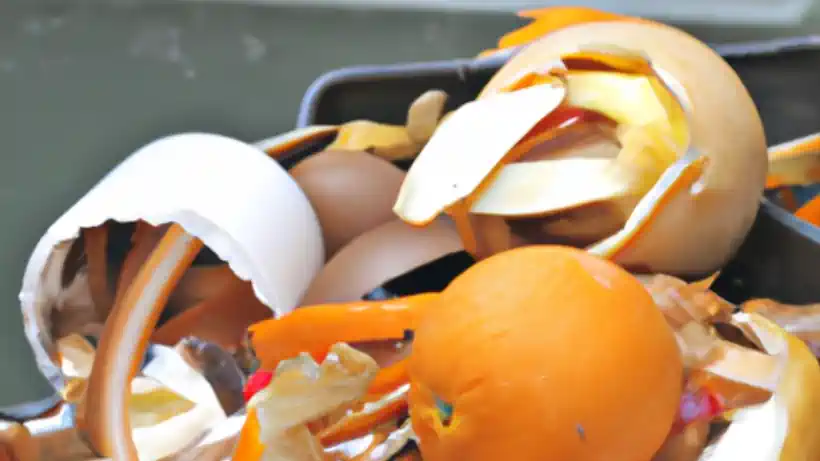
Why are bin men taking photos of my bin/ street?
In recent years, local councils have adopted modern technology that allows them to monitor the efficiency and effectiveness of their waste collection services. One of the ways that they do this is by equipping binmen with handheld devices that allow them to take photos of the bins and the streets they work on.
This technology is designed to help authorities identify areas that are in need of extra cleaning or to detect recycling bins that have been contaminated with non-recyclable materials. The photographs taken by binmen are uploaded to a database where the information is analyzed, and any issues are flagged for attention.
Residents may wonder why their binman is taking photos of their bin or street, but this is nothing to be concerned about. The use of this technology helps to improve waste management services by providing a more efficient and accurate way of monitoring the state of the streets and waste collection systems.
Therefore, it is crucial that residents continue to cooperate with their local council's recycling and waste collection policies to ensure that their area remains clean and free from waste pollution.
With the help of technology, local councils can provide better services to their residents, especially when it comes to recycling food waste and promoting clean and sustainable living.
Can I put animal bedding and cat litter in my garden waste bin?
It's a common question among animal owners if they can dispose of their animal bedding and cat litter in their garden waste bin.
However, this usually depends on the regulations set by the local council. In most cases, animal bedding and cat litter aren't accepted in garden waste bins since they pose a threat to the environment.
Garden waste bins are usually reserved for natural materials such as leaves, grass, and pruning from trees and shrubs. Animal waste isn't regarded as garden waste since it's considered a hygienic and environmental hazard.
The local councils usually provide special bins for disposing of animal waste, and they are usually collected on a separate schedule. If you're unsure about the regulations in your area, it's recommended to check with your local council before disposing of any animal waste in your garden waste bin. Alternatively, you could explore other options such as composting or using a pet waste disposal system.
Composting is an excellent way to dispose of animal waste, and it produces a nutrient-rich fertilizer that's beneficial to plants. In conclusion, it's essential to be mindful of the waste disposal regulations in your area, and always follow the guidelines set to maintain a clean and safe environment.
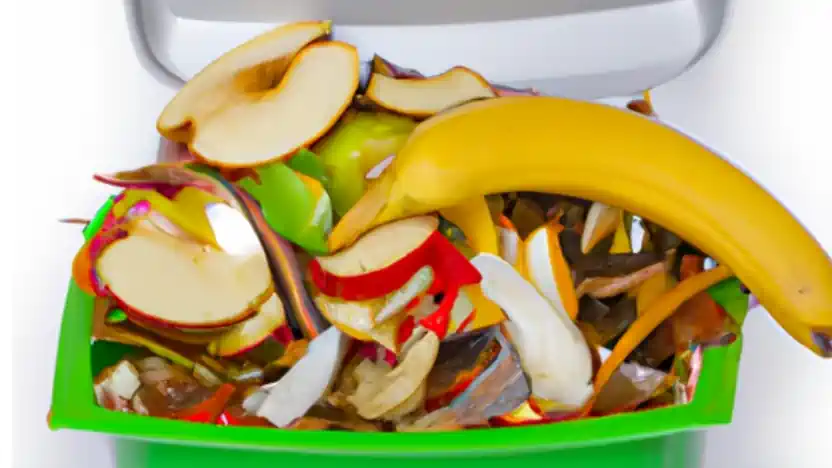
Conclusion – Recycling Food Waste
In conclusion, recycling food waste is a vital step towards reducing landfill waste and promoting a healthier environment.
If you have questions about recycling or waste collection services in your local area, it is essential to contact your local council for assistance.
They can provide you with information on how to recycle your food waste and what can be recycled. Remember to stay up to date with any changes to waste collection services in your local area and consider seeking financial assistance if needed. Together, we can work towards a more sustainable future.


